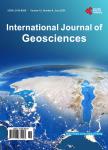A Review on Clustering Methods for Climatology Analysis and Its Application over South America
A Review on Clustering Methods for Climatology Analysis and Its Application over South America作者机构:Environmental Engineering Department Institute of Science and Technology São Paulo State University São José dos Campos Brazil Department of Geography Portland State University Portland Oregon Cemaden-National Center for Monitoring and Early Warning of Natural Disasters General Coordination of Research and Development São José dos Campos Brazil
出 版 物:《International Journal of Geosciences》 (地球科学国际期刊(英文))
年 卷 期:2023年第14卷第9期
页 面:877-894页
学科分类:08[工学] 0812[工学-计算机科学与技术(可授工学、理学学位)]
主 题:Climatology Clustering Methods Clustering Regionalization Reanalysis Data South America
摘 要:South America’s climatic diversity is a product of its vast geographical expanse, encompassing tropical to subtropical latitudes. The variations in precipitation and temperature across the region stem from the influence of distinct atmospheric systems. While some studies have characterized the prevailing systems over South America, they often lacked the utilization of statistical techniques for homogenization. On the other hand, other research has employed multivariate statistical methods to identify homogeneous regions regarding temperature and precipitation, but their focus has been limited to specific areas, such as the south, southeast, and northeast. Surprisingly, there is a lack of work that compares various multivariate statistical techniques to determine homogeneous regions across the entirety of South America concerning temperature and precipitation. This paper aims to address this gap by comparing three such techniques: Cluster Analysis (K-means and Ward) and Self Organizing Maps, using data from different sources for temperature (ERA5, ERA5-Land, and CRU) and precipitation (ERA5, ERA5-Land, and CPC). Spatial patterns and time series were generated for each region over the period 1981-2010. The results from this analysis of spatially homogeneous regions concerning temperature and precipitation have the potential to significantly benefit climate analysis and forecasts. Moreover, they can offer valuable insights for various climatological studies, guiding decision-making processes in diverse fields that rely on climate information, such as agriculture, disaster management, and water resources planning.



